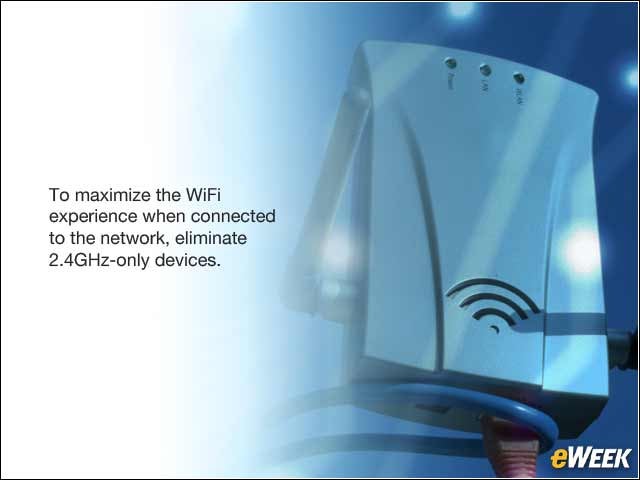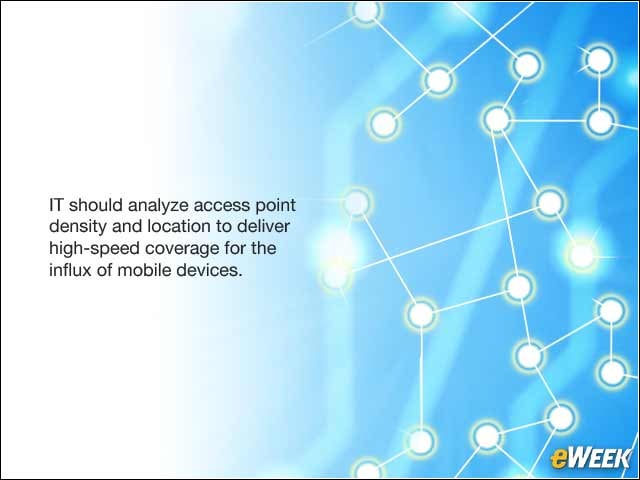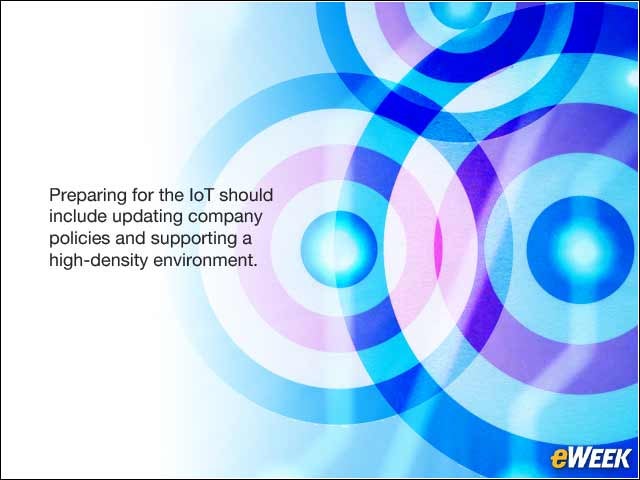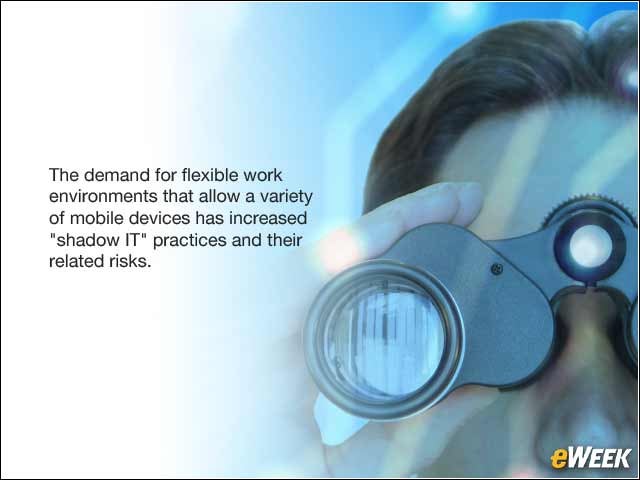eWEEK content and product recommendations are editorially independent. We may make money when you click on links to our partners. Learn More.
2Tax #1: The Junk Band
2.4GHz, with limited channels available, is commonly called the junk band. It’s still used today, but remains clogged with interference from Bluetooth, microwaves and many other devices. This leads to disruptions in the WiFi and potential downtime. The 5GHz band, with much more spectrum available, provides cleaner airwaves. To clean up the airwaves and maximize the WiFi experience when connected to the network, eliminate 2.4GHz-only devices. This kind of spectrum planning may take some work, but the returns make it worth the investment.
3Tax #2: Legacy Data Rates
Both 2.4GHz and 5GHz support multiple standards—some of which, like 802.11b, are now very old and slow with speeds as low as 1M bps. With the onset of new standards, such as 802.11ac and beyond, IT has the ability to create fast lanes on its network with speeds up to 6.9Gbps. Identify the devices that support legacy data rates and disable them to enjoy the freedom of speed on the network.
4Tax #3: Mobile Device Churn
Mobile devices in the workspace are nothing new and IT should prepare for the constant stream of new devices coming to market and onto their networks. This makes device management challenging, particularly with the average worker owning multiple devices and upgrading them regularly. Implementing solutions to simplify the onboarding, management and policy for these devices is critical. The returns are thankful users, as they won’t need to jump through hoops to use their mobile device of choice.
5Tax #4: Swarms of Devices
There will be 11.5 billion mobile-ready devices by 2019, and employees expect wireless speeds on any of their mobile devices in the same way they expect freedom of device choice—it’s second nature. With people and their devices often congregating in common areas for meetings and events, IT must analyze access point density and location to deliver high-speed coverage for the influx of devices hopping on and off the network. In return, your employees will be happier now that a database doesn’t take hours to open and IT is able to better control and manage the environment.
6Tax #5: WiFi Offloading
Mobile traffic is expected to grow tenfold by 2019, with more than 50 percent of that traffic offloaded to WiFi. Much of this traffic is driven by app, security and OS updates; often done exclusively over WiFi—all using precious bandwidth and affecting large percentages of the user population simultaneously. Without mobile traffic management, performance of key enterprise applications can suffer. Looking at network trends to understand the type of mobile traffic crossing the network allows IT managers to create priority traffic lanes and thwart potential traffic jams. By stamping certain traffic with the priority label, employees never have to worry about dropped VOIP or video calls again.
7Tax #6: Too Weak for the Bandwidth-Heavy
There is an increased appetite for bandwidth-intensive applications in the workspace, such as video conferencing and collaboration with mobile devices. This also has created increased drag on the network, limiting its ability to provide the greatest speeds for every connection. By adopting new standards, such as 802.11ac Wave 2, and retiring devices that have legacy data rates, IT can effectively avoid bottlenecks on the network and embrace new technologies—VoWiFi (voice over WiFi), video streaming—that can renew innovation and bring new life to the workplace.
8Tax #7: Network Reserves for Internet of Things
The Internet of things (IoT) describes the world in which all things are connected, and we’re living in the early stages of that reality. It’s now time to take steps toward preparing for the IoT, lest the network be taxed for years to come as it tries to catch up with the rise in connected devices. The number of connected things creates an increased need for maintenance and control of the network connection, all the way down to the individual device level. How do you prepare for IoT? To start, technology needs to support high-density environments and IT organizations need to update policies that reflect the realities of an IoT world.
9Tax #8: Security as an Afterthought
The number of mobile-connected devices exceeded the world’s population in 2014 and this extensive growth of mobile devices is only expected to continue in the coming years. From smartphones and tablets to the 578 million wearable devices expected by 2019, employees are enabled to work in new and different ways. The demand for flexible work environments using a variety of mobile technologies has also increased “shadow IT” practices that can tax the IT environment. However, IT managers should keep mobile security a top priority through these market transitions. It’s important to enact a fully integrated security strategy, and while there are many ways to approach security for a mobile environment, a good security policy should never be a last-minute addition.








